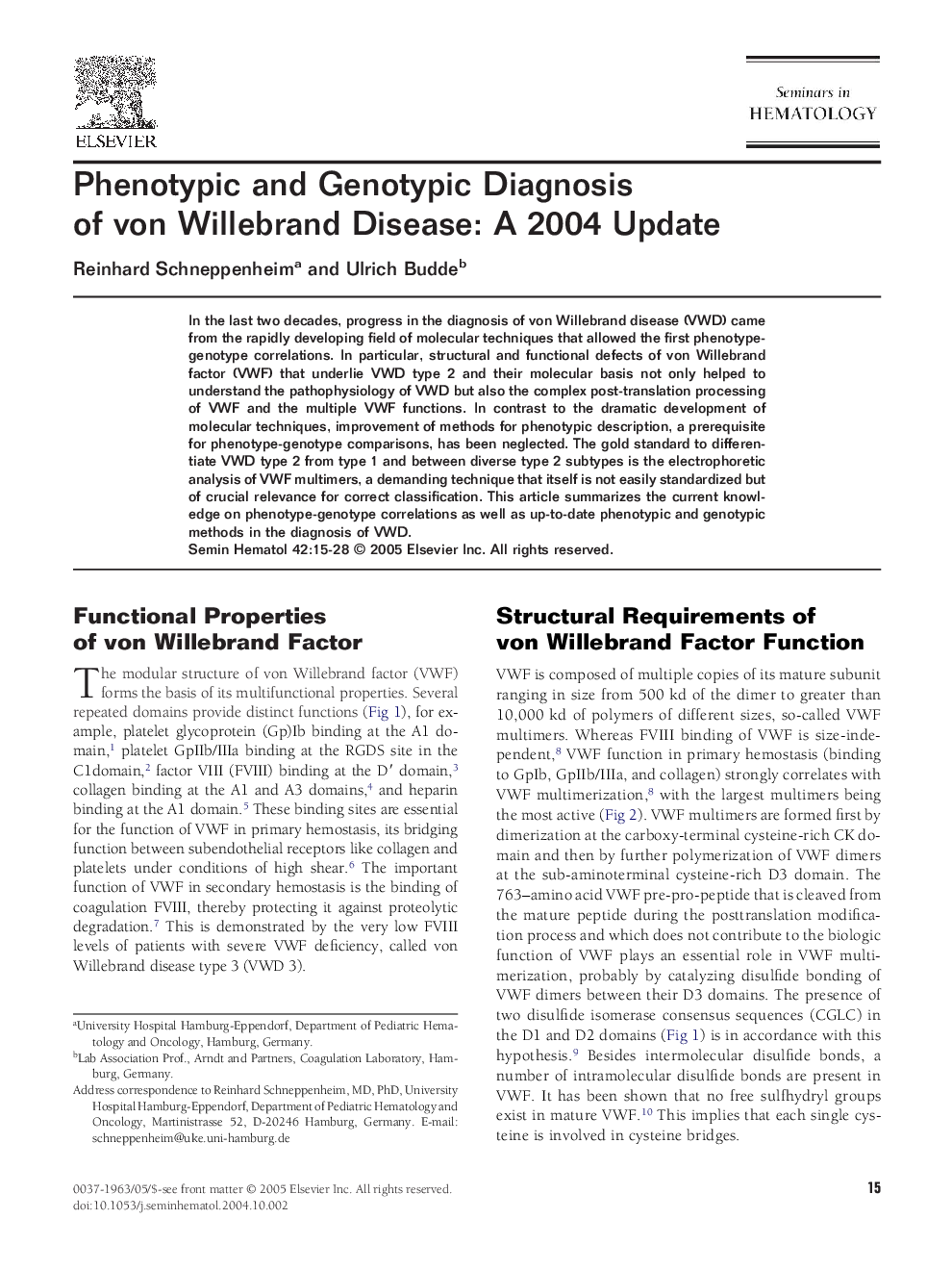| Article ID | Journal | Published Year | Pages | File Type |
|---|---|---|---|---|
| 9258420 | Seminars in Hematology | 2005 | 14 Pages |
Abstract
In the last two decades, progress in the diagnosis of von Willebrand disease (VWD) came from the rapidly developing field of molecular techniques that allowed the first phenotype-genotype correlations. In particular, structural and functional defects of von Willebrand factor (VWF) that underlie VWD type 2 and their molecular basis not only helped to understand the pathophysiology of VWD but also the complex post-translation processing of VWF and the multiple VWF functions. In contrast to the dramatic development of molecular techniques, improvement of methods for phenotypic description, a prerequisite for phenotype-genotype comparisons, has been neglected. The gold standard to differentiate VWD type 2 from type 1 and between diverse type 2 subtypes is the electrophoretic analysis of VWF multimers, a demanding technique that itself is not easily standardized but of crucial relevance for correct classification. This article summarizes the current knowledge on phenotype-genotype correlations as well as up-to-date phenotypic and genotypic methods in the diagnosis of VWD.
Related Topics
Health Sciences
Medicine and Dentistry
Hematology
Authors
Reinhard Schneppenheim, Ulrich Budde,
